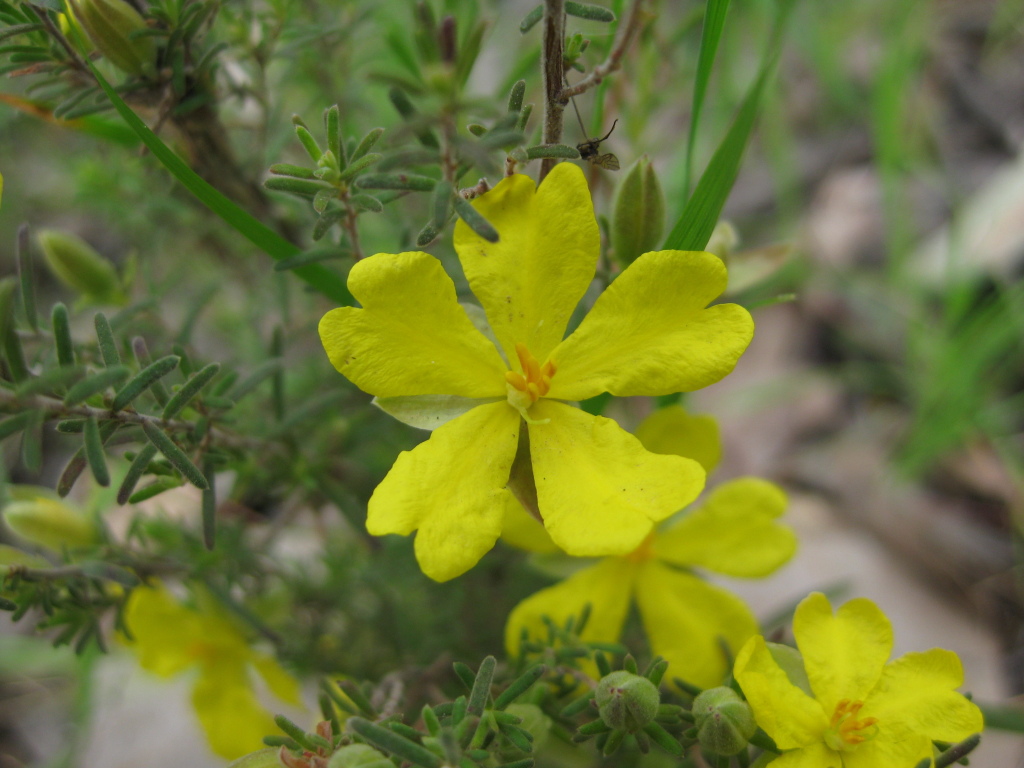Hibbertia riparia
(R.Br. ex DC.) HooglandErect to spreading, rarely decumbent shrubs to 1.2 m high; branches puberulous to tomentose. Vestiture of simple and/or stellate hairs with few-many, often unequal branches. Leaves linear, 3–22.8 mm long, 0.6–3.6 mm wide, puberulent to tomentose above and below; petiole 0–0.6 mm long; apex acute, obtuse or rarely rounded, with scarcely to obviously protruding central ridge; margins broad, revolute, touching the raised, rarely recessed, broader central ridge below. Flowers sessile, rarely with peduncles to 18 mm long, terminal, but often on short shoots, subtended by 1–several linear-lanceolate bract(s) 2.4–6.2 mm long; sepals 4.5–9.8 mm long, unequal, puberulous to tomentose; petals obovate, 4.8–11.2 mm long, pale to bright yellow; stamens 6–15 in one cluster; filaments free to somewhat connate basally; carpels 2, tomentose. Flowers Sep.–Dec.
LoM, MuM, Wim, GleP, VVP, VRiv, GipP, OtP, WaP, Gold, CVU, GGr, DunT, NIS, EGL, EGU, WPro, HSF, HNF, OtR, Strz, VAlp. Also SA, Qld, NSW, ACT, Tas. The most widespread member of the genus in Victoria, occurring in a diverse range of habitats (e.g. heathland, woodland, open-forest, mallee scrubs etc.).
This species complex has many local forms, and more taxa are likely to be described following taxonomic review. So far, in Victoria 3 species have been removed from Hibbertia riparia since the last Flora of Victoria treatment (see notes under H. australis, H. devitata, and H. setifera). Plants from the Grampians and Brisbane Ranges with a dense layer of spreading hooked simple hairs on the outer calyx probably represent a fourth undescribed species. Furthermore, H. riparia sensu stricto may not be present in Victoria (Toelken pers. comm.). This name has probably been misapplied in Victoria, and some, if not all plants currently referred to H. riparia are likely to be transferred into new species in the future.
Toelken, H.R. (1996). Dilleniaceae. In: Walsh, N.G.; Entwisle, T.J., Flora of Victoria Vol. 3, Dicotyledons Winteraceae to Myrtaceae, pp. 300–313. Inkata Press, Melbourne.
 Spinning
Spinning

